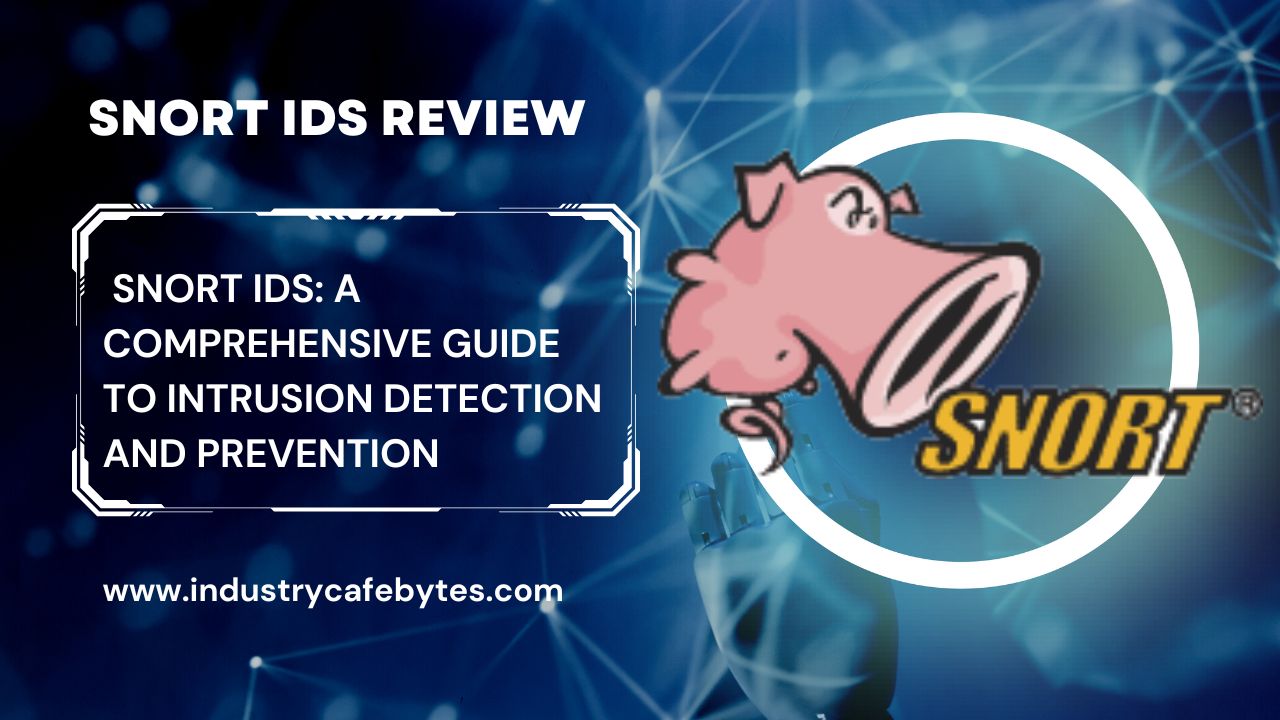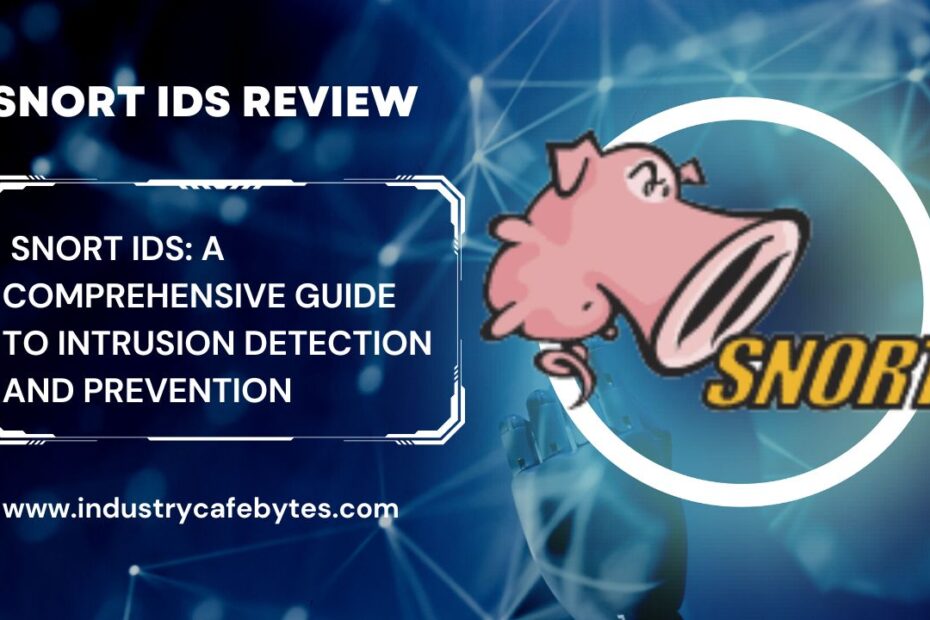Snort IDS: A Comprehensive Guide to Intrusion Detection and Prevention
Introduction to Snort IDS:
Snort IDS, is also known as an intrusion detection and prevention system and it was developed by Martin Roesch in 1998, Snort IDS emerged as a vital component of network security. In this post, we will discuss various aspects and give brief detail about Snort IDS, its key functions, merits, and demerits, and present a 5-year roadmap that outlines its future trajectory. With its user-friendly approach and powerful capabilities, It has become a go-to solution for organizations seeking robust intrusion detection and prevention. So, let’s embark on this journey to explore the world of Snort IDS.

1. How Snort IDS operates:
Capturing, analyzing, and matching packets Snort IDS operates by capturing network packets and analyzing their content to identify potential security threats. It examines packet headers and payloads, comparing them against predefined rules and signatures to determine if they indicate malicious activity. This process allows Test Snort IDS to effectively detect and respond to potential cyber-attacks in real time.
2. Signature-based and anomaly-based detection techniques:-
It utilizes both signature-based and anomaly-based detection techniques to identify and prevent network intrusions. Signature-based detection involves comparing network traffic against a database of known attack signatures. If a match is found, the system generates an alert or takes appropriate action. Anomaly-based detection, on the other hand, focuses on identifying deviations from normal network behavior. It establishes a baseline of typical network activity and flags any anomalies that may indicate a potential security breach.
3. The Role of Snort IDS in the World of Network Security:-
Snort IDS plays a critical role in the world of network security as an essential tool for detecting and preventing unauthorized access, cyber-attacks, and data breaches. By continuously monitoring network traffic, Snort IDS helps organizations identify and respond to security incidents promptly, minimizing the potential impact of intrusions. Its ability to detect various types of attacks, such as DoS attacks, DDoS attacks, and buffer overflows, strengthens the overall security posture of networks and safeguards sensitive data and critical infrastructures. Snort IDS empowers network administrators to proactively defend against evolving threats and maintain the integrity and confidentiality of their network environments.
Definition of Snort IDS
How it operates: Capturing, analyzing, and matching packets.
Signature-based and anomaly-based detection techniques.
The Role of Snort IDS in the World of Network Security:
Importance of intrusion detection and prevention systems.
Its contribution to safeguarding critical infrastructures and sensitive data.
Snort IDS: Top Functions and Capabilities:
Detecting and preventing denial-of-service (DoS) attacks
Identifying distributed denial-of-service (DDoS) attacks
Mitigating common gateway interface (CGI) attacks
Countering buffer overflows and stealth port scans
Customization and rule configuration options
Merits and Demerits of Snort IDS:
Advantages: Open-source nature, community support, and customization options
Drawbacks: Potential false positives, limitations in detecting new attack techniques, the performance impact
Roadmap: A 5-Year Vision:
Enhancing performance to handle increasing network speeds
Rule management and optimization advancements
Integration with machine learning and artificial intelligence
Scalability and support for cloud-based environments
Collaboration with the security community to address emerging threats
Predicting the Future of Snort IDS:
Evolving attack landscape and the need for advanced detection capabilities
Harnessing emerging technologies for enhanced threat detection and response
Continuous updates and enhancements to keep pace with evolving threats
Snort IDS Rules: The Building Blocks of Detection
Snort IDS rules define specific conditions and criteria for detecting malicious activities. These rules can be customized to target specific types of attacks or network segments. The Snort community continually updates and maintains a vast database of rules.
Snort IDS Appliance: Simplifying Deployment and Management
Snort IDS appliances provide preconfigured hardware or virtual appliances, simplifying the deployment and management of Snort IDS. These appliances offer optimized performance and easier integration into existing network infrastructures.
Roadmap: A Five-Year Vision
Looking ahead, the roadmap for Snort IDS includes several key focus areas:
Performance enhancements to handle increasing network speeds.
Improved rule management and optimization.
Integration with emerging technologies such as machine learning and artificial intelligence for advanced threat detection.
Enhanced scalability and support for cloud-based environments.
Collaboration with the security community to address evolving threats.
Important Role in the World of Network Security
It has established itself as a prominent player in the world of network security. Its open-source nature, flexibility, and strong detection capabilities make it a valuable tool for various industries.
Key Functions: Detecting and Preventing Cyber Attacks:-
Stealth port scans: It monitors incoming network traffic and can detect stealth port scanning activities, which are often used by attackers to identify potential vulnerabilities in a network.
Snort IDS can detect and prevent various types of cyber attacks, including:
Denial-of-Service (DoS) attacks: By monitoring network traffic patterns and identifying anomalies, It can detect and mitigate DoS attacks.
Distributed Denial-of-Service (DDoS) attacks: Snort IDS analyzes traffic patterns to identify suspicious traffic sources and help organizations respond to DDoS attacks effectively.
Common Gateway Interface (CGI) attacks: Snort IDS inspects web traffic, identifies malicious CGI requests, and protects web applications from potential vulnerabilities.
Buffer overflows: it uses signature-based detection and anomaly-based detection techniques to identify attempts to exploit buffer overflow vulnerabilities.
Stealth port scans
Snort IDS Review:
The Merits and Demerits of Snort IDS
Merits:
- Open-source nature allows for customization and community collaboration.
Wide range of available rules for detecting known attack patterns.
Effective detection of various types of cyber attacks.
Frequent updates and support from the Snort community. - Open-source and freely available.
Highly customizable through rule configuration.
Wide community support and regular rule updates.
Effective detection of known attack patterns.
Demerits:
May generate false positives, requiring manual investigation.
Relies on signatures, which may not detect new or sophisticated attacks.
Performance impact on high-speed networks.
Requires expertise in rule configuration and maintenance.
Future Predictions for Snort IDS
As the field of network security evolves, It is expected to adapt and enhance its capabilities to address emerging threats. Some future predictions for Snort IDS include:
Integration with advanced technologies like machine learning and artificial intelligence for improved threat detection and response.
Collaboration with other security tools and platforms to provide comprehensive network security solutions.
Continual updates and enhancements to keep pace with evolving attack techniques.
Improved scalability and performance to handle the increasing network speeds.
Using Snort IDS for Intrusion Prevention
In addition to intrusion detection, it can be configured for intrusion prevention. By leveraging its capabilities, network administrators can automatically block or mitigate detected threats, enhancing the overall security of the network infrastructure.
Frequently Asked Questions (FAQs)
Q1: Can Snort IDS be integrated with other security tools and platforms?
A1: Yes, it can be integrated with various security tools and platforms to provide a comprehensive network security solution. This allows for improved threat detection and response capabilities.
Q2: Is Snort IDS suitable for small businesses?
A2: Yes, it is widely used by organizations of all sizes, including small businesses. It’s open-source nature and customizable features make it an attractive option for businesses with limited resources.
Q3: How often are Snort IDS rules updated?
A3: The Snort community regularly updates and maintains the rules database to include new signatures and address emerging threats. It is recommended to keep the rules updated to ensure effective detection.
In conclusion,
Snort IDS is a powerful intrusion detection and prevention system that plays a crucial role in network security. With its ability to detect and prevent various types of cyber attacks, Snort IDS provides organizations with an essential layer of defense. While it has its merits and demerits, continuous development and community support ensure its relevance in the ever-changing landscape of network security. By leveraging Snort IDS and staying updated with its roadmap, organizations can enhance their security posture and protect their networks from potential threats.
Also Read:-
Globalization Partners Review: The Role in the World 2023
Rivian Stock Price Prediction 2023
Nest Aware | Google Nest Security Camera Features, Subscription & Pricing in 2023
Harbor Freight Solar Panels | Best Buy Product in 2022


Reviews